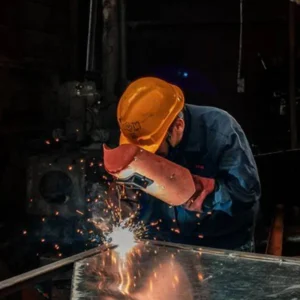Table of Contents
Toggletips and tricks welding
Welding is a critical process that requires skill, knowledge, and utmost safety precautions. Whether you are a novice or an experienced welder, following safety tips and tricks is essential to protect yourself and others from potential hazards. In this article, we will explore some important safety measures to consider when engaging in welding operations.
Wear Proper Personal Protective Equipment (PPE)
When welding, wearing appropriate personal protective equipment (PPE) is crucial to safeguard against potential injuries. Here are some essential PPE items for welding:
a. Welding Helmet: A welding helmet with a proper shade lens protects your eyes and face from harmful UV radiation, sparks, and debris. Ensure that the helmet fits securely and offers adequate coverage.
b. Safety Glasses or Goggles: Wear safety glasses or goggles under the welding helmet for additional eye protection, especially from flying particles and chemicals.
c. Flame-Resistant Clothing: Use flame-resistant clothing, such as welding jackets or coveralls, to shield your body from sparks, molten metal, and potential burns. Avoid wearing loose or synthetic clothing that can easily catch fire.
d. Welding Gloves: Choose welding gloves that provide heat resistance and dexterity to handle hot materials and protect your hands from burns, sparks, and electric shock.
e. Steel-Toed Boots: Wear steel-toed boots to protect your feet from falling objects, heavy equipment, or accidental contact with hot materials.
Ensure Proper Ventilation
Proper ventilation is crucial when welding to minimize the exposure to hazardous fumes, gases, and smoke. Follow these tips for adequate ventilation:
a. Work in a Well-Ventilated Area: Weld in a well-ventilated space, preferably outdoors or in a properly ventilated welding booth. Good airflow helps disperse fumes and prevents their accumulation.
b. Use Local Exhaust Ventilation: Utilize local exhaust ventilation systems, such as fume extractors or hoods, to capture and remove fumes at the source. Position these systems close to the welding area for maximum effectiveness.
c. Position Yourself Upwind: If working outdoors, position yourself upwind of the welding fumes to minimize inhalation. This reduces the chances of respiratory issues caused by exposure to toxic fumes.
Prepare the Work Area
Maintaining a clean and organized work area promotes safety and efficiency. Consider the following tips:
a. Remove Flammable Materials: Clear the work area of flammable materials, including paper, fabric, and chemicals. Sparks and hot metal can ignite these materials, leading to fires.
b. Protect Surrounding Surfaces: Use welding blankets or fire-resistant materials to protect nearby surfaces from sparks, molten metal, and heat.
c. Secure Workpieces: Securely position workpieces to prevent them from shifting or falling during welding. Use clamps, vises, or fixtures to hold them in place.
Practice Electrical Safety
Welding involves electrical equipment, so electrical safety precautions are essential. Follow these tips:
a. Inspect Cables and Equipment: Regularly inspect welding cables, connections, and equipment for damage or wear. Replace any faulty or damaged components to prevent electrical hazards.
b. Grounding: Ensure that the welding machine, workpiece, and any auxiliary equipment are properly grounded. Proper grounding helps prevent electrical shocks and reduces the risk of fire.
c. Avoid Wet Conditions: Never weld in wet conditions or on wet surfaces, as water increases the likelihood of electrical shock. Keep the work area dry and use appropriate insulation to protect against moisture.
Fire Prevention
Welding operations can pose fire hazards, so fire prevention should be a top priority. Consider the following tips:
a. Have Fire Extinguishers: Keep fire extinguishers readily available in the work area and ensure that they are properly charged and inspected.
b. Use Fire-Resistant Materials: Utilize fire-resistant welding blankets, curtains, or screens to isolate the welding area and prevent sparks from reaching flammable materials.
c. Establish Hot Work Permits: If working in a commercial or industrial setting, follow the established hot work permit process to ensure proper safety protocols are observed.
When it comes to welding, safety should always be a primary concern. By following these essential safety tips and tricks, you can minimize the risk of accidents, injuries, and potential hazards associated with welding operations. Remember to wear proper PPE, ensure adequate ventilation, prepare the work area, practice electrical safety, and prioritize fire prevention. By incorporating these safety measures into your welding practices, you can create a safer working environment and safeguard yourself and others from harm.
In summary, adhering to safety tips and tricks when welding is vital to protect against potential hazards. By wearing appropriate PPE, ensuring proper ventilation, preparing the work area, practicing electrical safety, and prioritizing fire prevention, welders can minimize risks and create a safe working environment. Always prioritize safety and never compromise when it comes to protecting yourself and others during welding operations.

